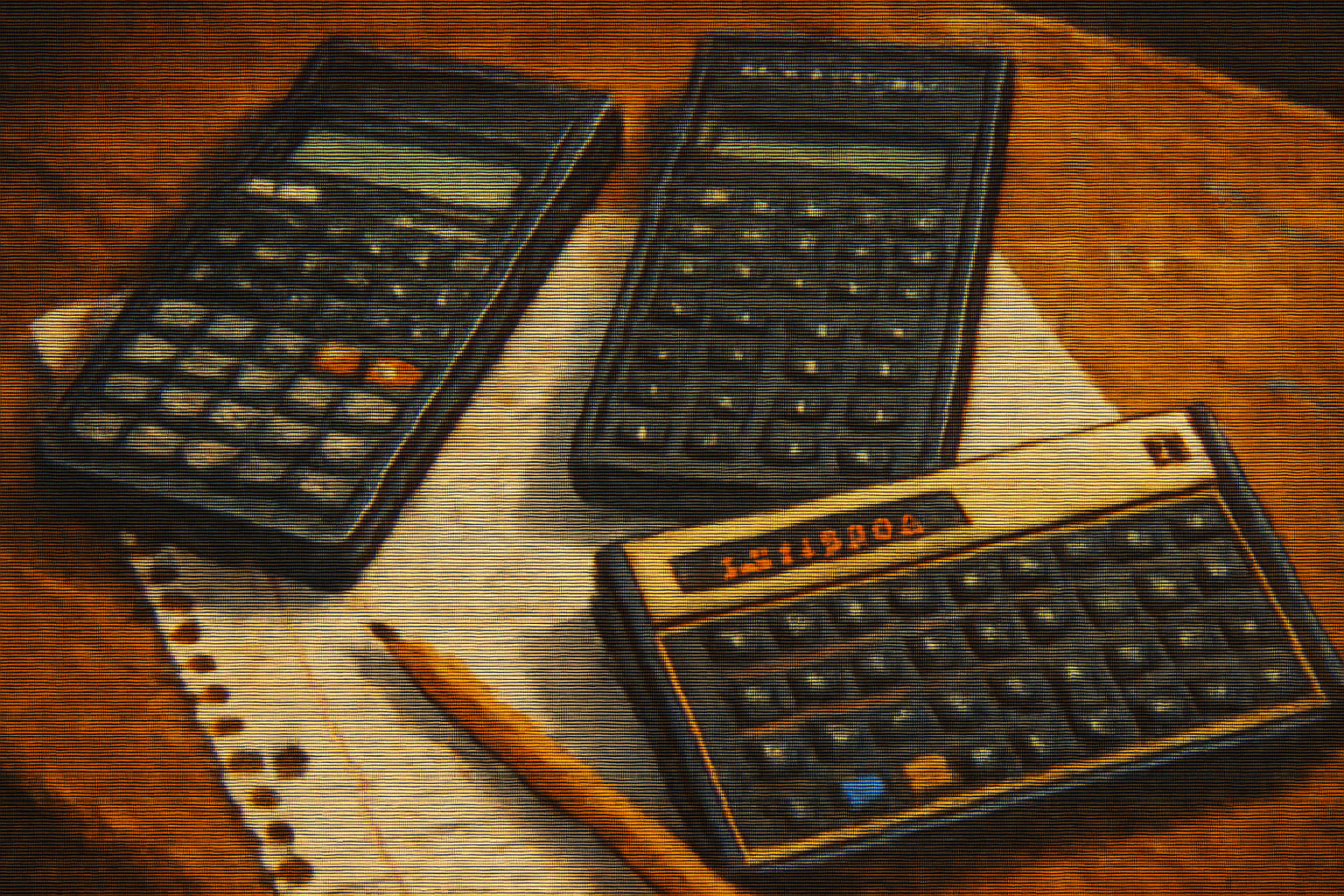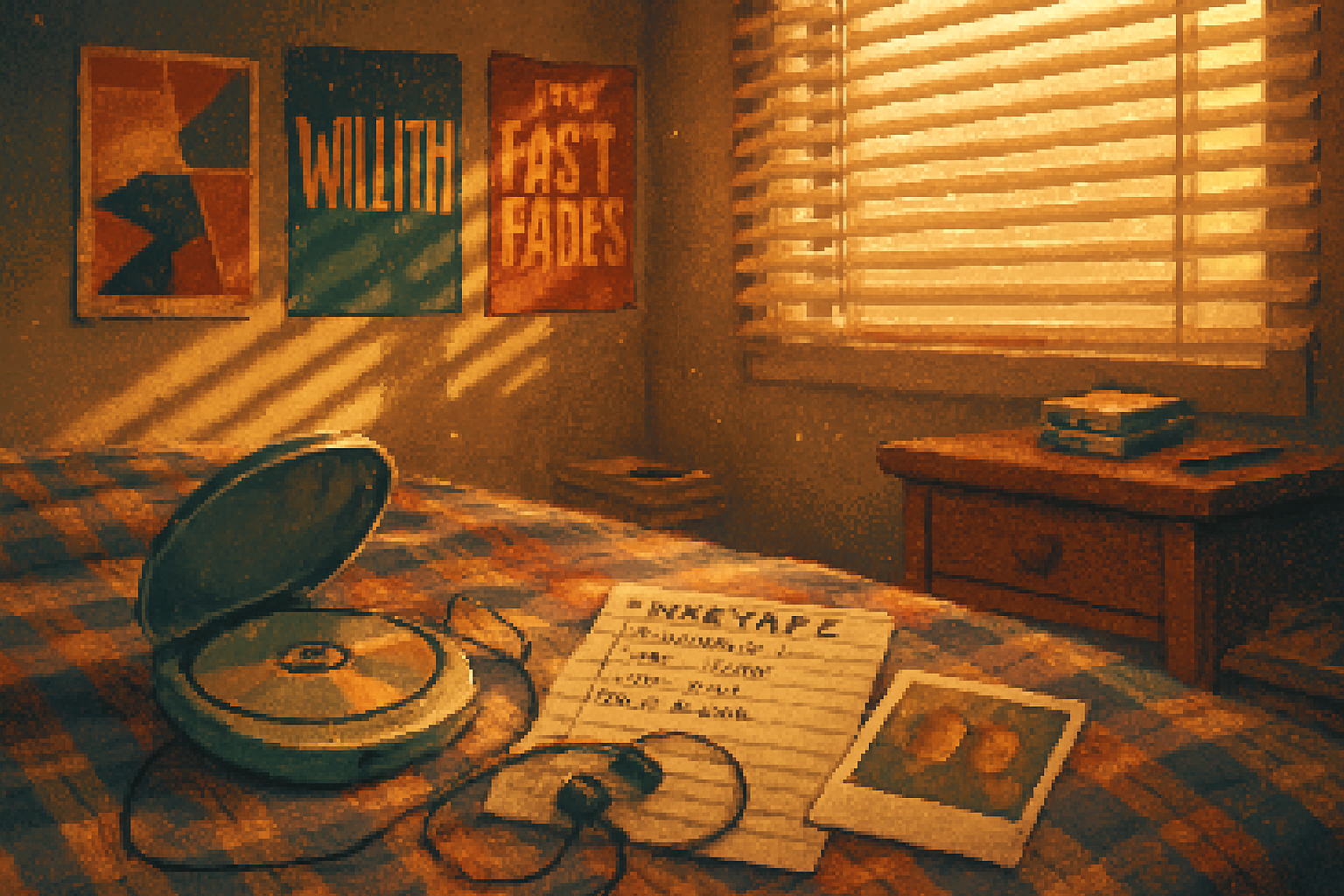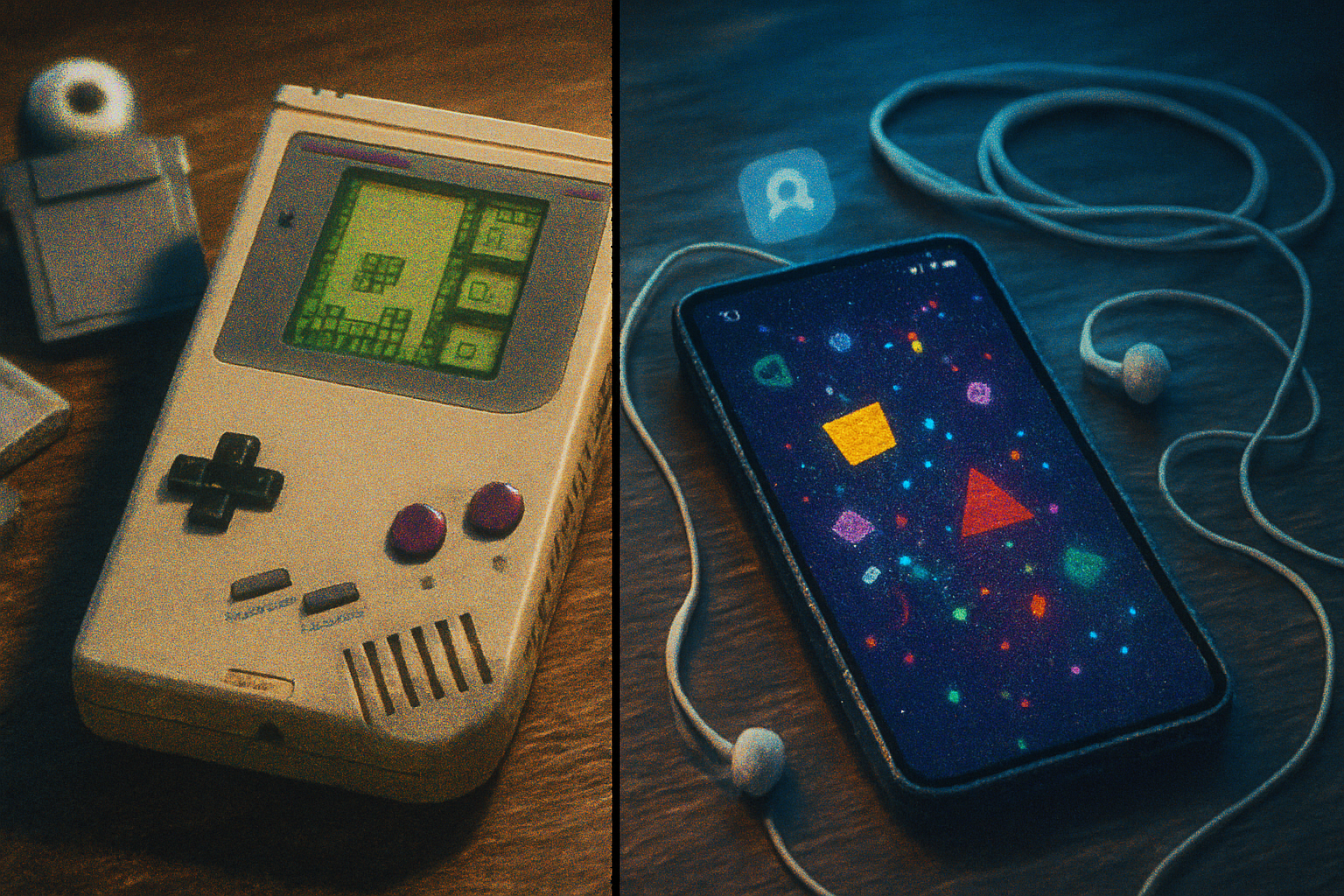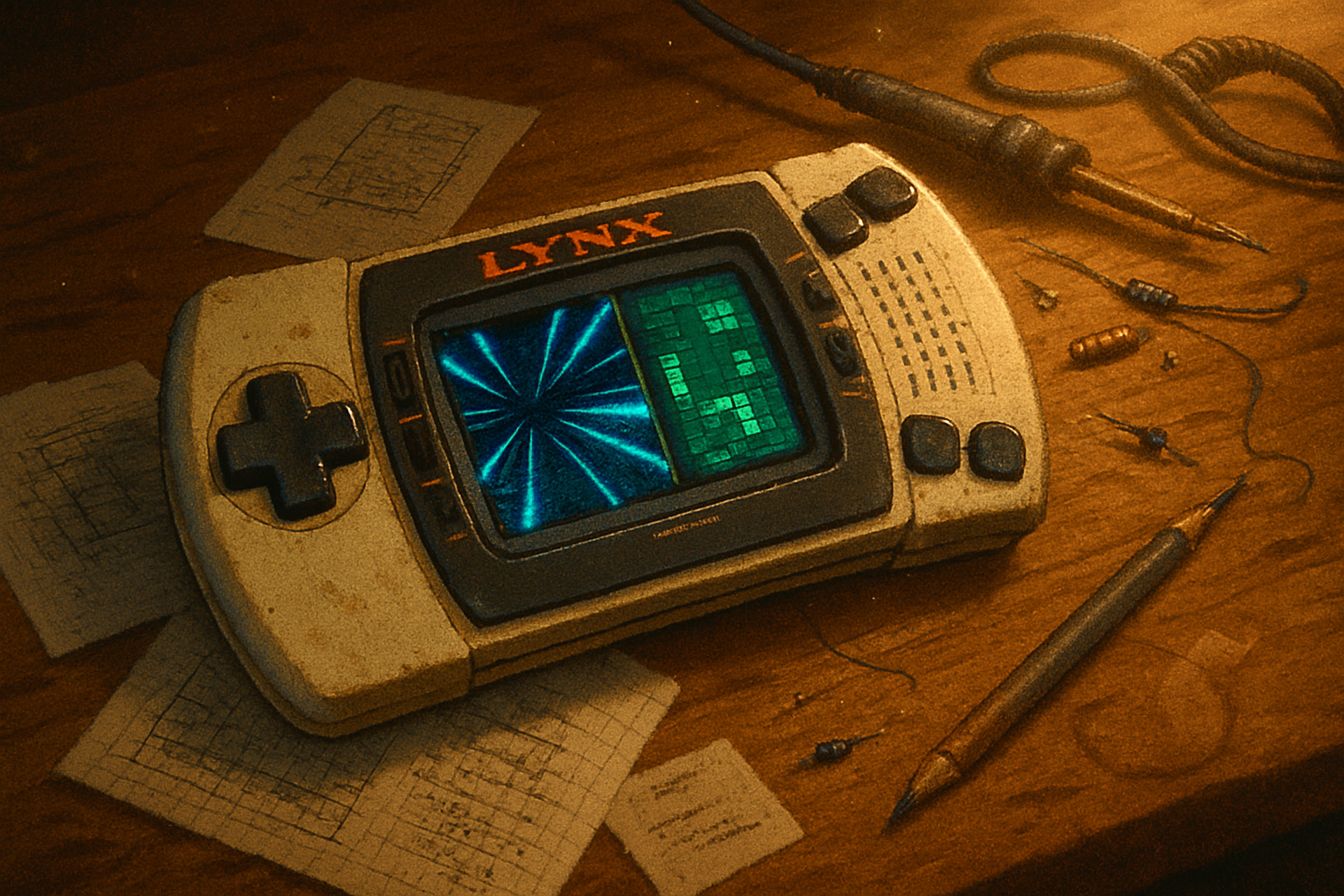· culture · 6 min read
The Digital Renaissance: How Casio Watches Defined a Generation
How affordable, unapologetically digital Casio watches - from calculator and Databank models to the indestructible G-Shock - became style icons, cultural signifiers, and technological forerunners that helped birth today's wearable era.
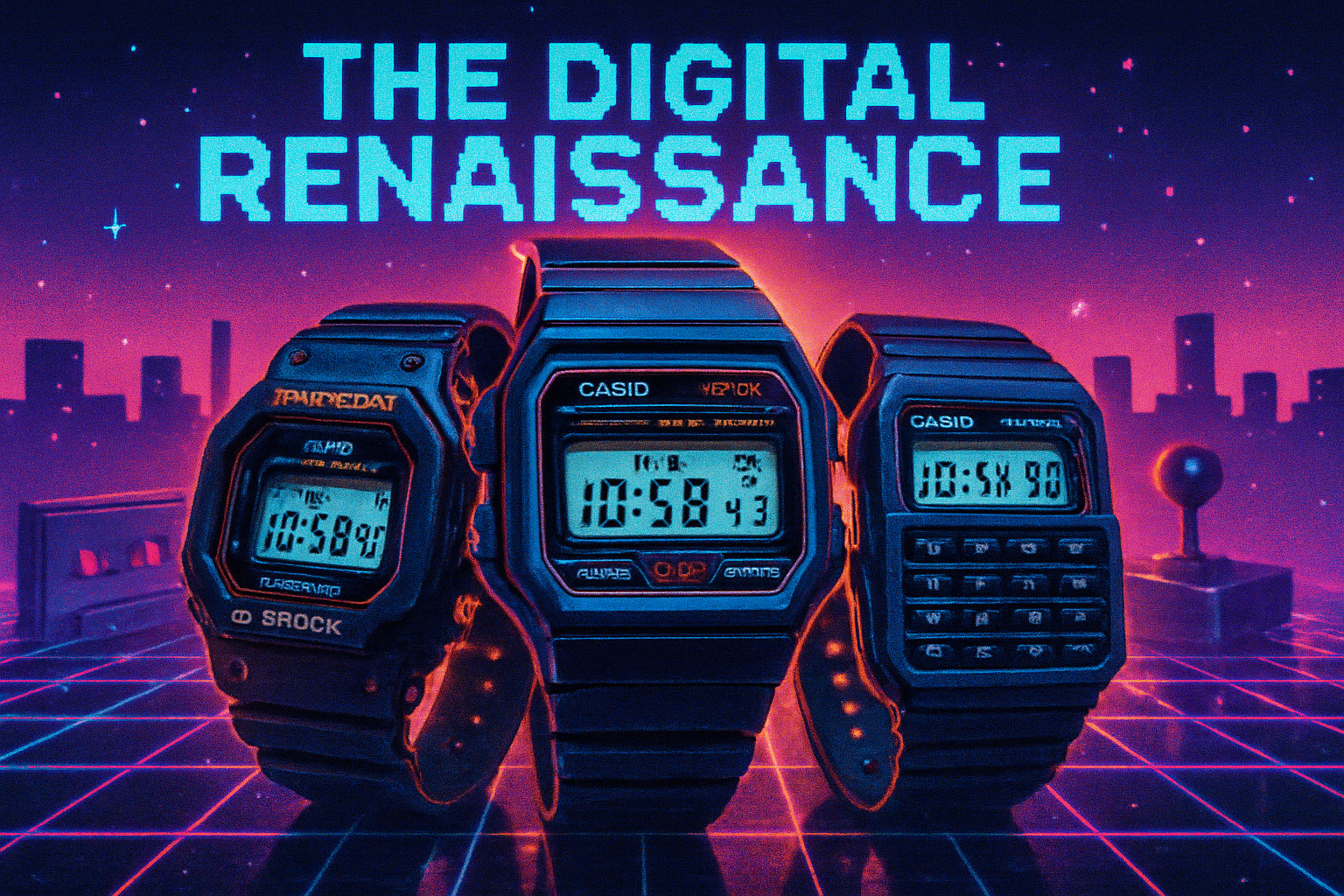
Introduction
In the late 1970s through the 1990s, a subtle revolution wrapped itself around millions of wrists. It wasn’t driven by couture houses or luxury watchmakers but by a Japanese electronics firm that married affordability, functionality, and an unmistakable aesthetic. Casio watches - cheap enough to be ubiquitous yet clever enough to feel futuristic - became both a fashion statement and a symbol of technological progress.
This was a Digital Renaissance: a moment when computation, communication, and personal style intersected on the smallest of canvases. Below I trace how Casio transformed a generation’s relationship with time, technology, and taste.
From Calculator to Casiotron: Casio’s move into wrist tech
Casio’s roots are in consumer electronics; the company was built on calculators and small devices. By the mid-1970s it began applying that miniaturization know-how to wristwatches. Casio’s early digital models brought features previously seen only in lab instruments into everyday life: LED/LCD displays, calendar functions, alarms, and later, integrated calculators and databanks.
- The company’s historical timeline and early product context are documented in the Casio Museum.
- Notable early milestones and an overview of the brand are summarized on Casio’s Wikipedia page.
By putting computational features on the wrist, Casio wasn’t just adding functions - it was reframing what a watch could be: a tiny, personal computer.
Iconic models that became cultural touchstones
A few Casio models achieved mythic status, each reflecting and shaping the tastes of its era.
The Databank series - These models put phone numbers and short notes on your wrist, anticipating the idea of personal, portable data long before mobile phones. (See
The F-91W - Introduced in the late 1980s, the F-91W is famous for being affordable, reliable, and unpretentious. Its ubiquity made it a global symbol of practical digital design. (See
G-Shock - Launched in 1983 and engineered for near-indestructibility, the G-Shock line reimagined what a watch could survive - and look like. Its rugged, chunky silhouette became a style statement across skateparks, hip-hop circles, and military units. (See
Each model hit a different cultural nerve: Databank satisfied the nerdy promise of carrying information everywhere; the F-91W gifted a reliable, democratic aesthetic; the G‑Shock made durability fashionable.
Design language: the aesthetic of the digital era
Casio’s visual vocabulary was bold and immediate:
- Blocky, legible LCD faces gave a technical, utilitarian look.
- Plastic and resin cases emphasized affordability and durability over precious materials.
- Backlights, beeps, and alarm melodies turned timekeeping into an experience, not just a utility.
This aesthetic aligned with key 1980s and 1990s sensibilities: a love of neon, gridlines, and cybernetics in pop culture - the very motifs of what we now call retro-futurism. Casio watches looked like the future because they carried microprocessors on the wrist and wore that circuitry proudly.
Democratizing tech: affordability and accessibility
One of the most important aspects of Casio’s cultural impact was accessibility. These were not luxury items. Their price made digital functionality available to students, blue‑collar workers, and kids who couldn’t afford a status watch but wanted to wear the future.
That democratization had a multiplier effect:
- Mass adoption accelerated familiarity with personal digital interfaces.
- A generation grew up comfortable with small screens, simple menus, and on-wrist alerts.
- Owning such a device normalized the idea that useful computation could be personal, portable, and intimate.
Casio’s watches thus lowered the barrier to everyday computation and helped seed a cultural expectation: we should be able to carry useful, reliable tech on our bodies.
Pop culture and subcultures: wearing a signal
Casio’s watches were everywhere - in music videos, on athletes, and in the streets. They became badges for various communities:
- Streetwear and hip-hop embraced G‑Shock’s oversized toughness as a counterpoint to luxury minimalism.
- Skate and punk scenes favored tough, inexpensive watches that stood up to physical activity.
- Tech-savvy kids and early nerd culture showed off Databank and calculator models as trophies of competence.
Because they were affordable and visible, Casio watches were egalitarian status symbols. You could tell a lot about someone from the model on their wrist: practicality, humor, interest in gadgets, or alignment with a particular subculture.
The lineage to modern wearables
Casio didn’t invent the smartwatch as we know it today, but it established many of the building blocks:
- Miniaturized processors and low-power LCD interfaces.
- Purpose-driven features on the wrist (timers, alarms, data entry, durability).
- A user experience shaped by small screens and simple controls.
These elements are legible in modern smartwatches: compact UIs, focus on battery life, and the idea that your wrist is a personal interface. For context on the broader evolution from implanted calculators and wrist displays to contemporary connected devices, see the history of wearable computers and the smartwatch article.
Casio’s emphasis on practical features and long battery life also offered a counterpoint to the early smartphone era: you didn’t need constant connectivity to make a device indispensable. This lesson reverberates today in design choices around battery life, glanceability, and focused interactions.
Marketing and storytelling: cheap, clever, indestructible
Casio’s marketing reinforced its claims: durability tests, schoolyard demonstrations of functionality, and clear messaging about value. The G-Shock origin story - an engineer seeking to build the “unbreakable watch” - is itself a narrative that resonates: it links engineering rigor to consumer identity.
By contrast with status-oriented luxury ads, Casio’s story celebrated utility and cleverness. That storytelling created an emotional link with consumers who saw technology as a tool rather than a trophy.
Nostalgia, revival, and collecting
As digital natives aged, Casio’s watches accrued nostalgic value. Retro resurgences in fashion and the renewed fascination with 80s/90s aesthetics have turned models like the F-91W and early G-Shocks into collectible items.
This cyclicality - from cheap tool to vintage icon to designer-collab prize - demonstrates how utilitarian objects can be reinterpreted through cultural lenses. Collaborations between Casio and high-fashion or streetwear brands show the brand’s ongoing relevance.
Lessons for contemporary designers
Casio’s story holds lessons for today’s wearable designers:
- Solve real problems first - small, focused features can create enduring value.
- Make tech affordable and robust to broaden cultural adoption.
- Design with personality - functional devices can, and should, have style.
- Embrace constraints like battery and interface limits to drive creative UX decisions.
These principles are visible in contemporary successes that balance battery life, glanceability, and durable design.
Conclusion: more than a watch
Casio watches did something deceptively simple but profound: they made computation wearable, visible, and democratic. By combining practical features, resilient engineering, and an unapologetically digital aesthetic, Casio created objects that defined how a generation saw time and technology.
The Digital Renaissance wasn’t only about silicon and screens; it was about culture catching up to the possibilities of personal electronics. Casio gave that culture an everyday icon - one that helped normalize the idea of a computer on your wrist and paved the way for the connected wearables we now take for granted.
Selected references
- Casio Museum - Company history and product archive: https://museum.casio.com/eng/
- Casio (Wikipedia) - Overview of the company: https://en.wikipedia.org/wiki/Casio
- G-Shock (Wikipedia) - History of the G-Shock line: https://en.wikipedia.org/wiki/G-Shock
- Casio F-91W (Wikipedia) - The ubiquitous low-cost digital watch: https://en.wikipedia.org/wiki/Casio_F-91W
- Casio Databank (Wikipedia) - Early wrist devices with data storage: https://en.wikipedia.org/wiki/Casio_Databank
- Wearable computer (Wikipedia) - Broader history of wearable devices: https://en.wikipedia.org/wiki/Wearable_computer
- Smartwatch (Wikipedia) - Evolution toward today’s connected wearables: https://en.wikipedia.org/wiki/Smartwatch
